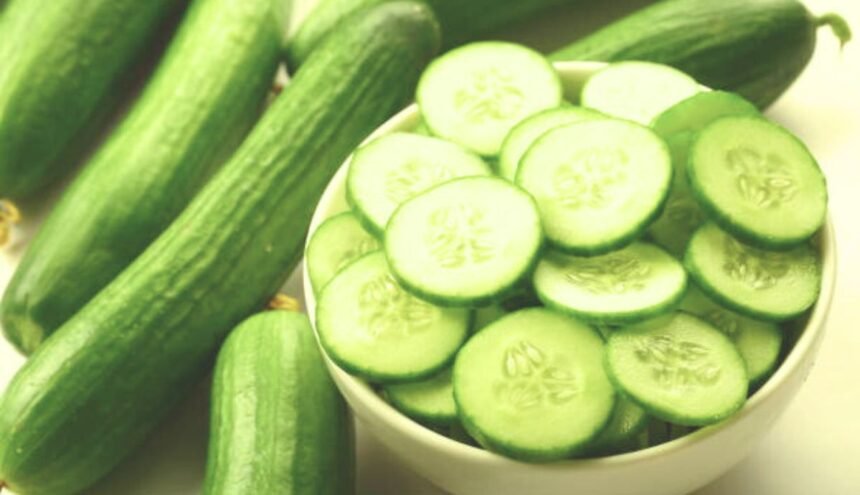Cucumbers are commonly thought of as vegetables, yet they are botanically classified as fruits. This leads to an understandable debate over whether cucumbers should be considered fruits or vegetables.
While there are reasonable arguments on both sides, there are several key reasons why cucumbers are typically referred to as vegetables in culinary and nutritional contexts.
What Makes a Fruit a Fruit?
Botanically speaking, a fruit is the mature ovary of a flowering plant that contains the seeds. By this definition, cucumbers are indeed fruits. They develop from the ovary of cucumber plants after pollination and contain seeds inside their flesh. Other botanical fruits that are commonly considered vegetables include tomatoes, peppers, zucchini, and eggplants.
On the other hand, the culinary definition of a fruit is broader and includes any edible plant part that has a sweet or tart taste, whether it develops from the ovary or not. By this looser definition, rhubarb stalks, bananas, and avocados qualify as fruits, even though they don’t fit the botanical definition.
So cucumbers are botanically fruits but don’t meet the culinary definition due to their mild, watery taste. This ambiguity is why they are somewhere in between fruits and vegetables in practical usage.
Cucumber Plant and Growth
Cucumbers are cultivated from various vine species in the Cucurbitaceae family, which also includes melons, squashes, and gourds. Popular varieties include slicing cucumbers, pickling cucumbers, and specialty heirloom types like lemon cucumbers.
They have been cultivated in India for at least 3,000 years and were later brought to ancient Greece and Rome.
Cucumber vines produce separate male and female blossoms. For pollination and fruit production, the male and female flowers must both be present for bees to transfer pollen between them.
Once pollinated, the female flowers develop into cucumbers over the next 2-4 weeks. The cucumbers hang from trellises or creep along the ground as they grow on the vines. They are harvested while still green and immature, before the seeds fully develop and harden.
Nutritional Profile
Cucumbers are composed of about 96% water. This means that they are low in calories – a one cup serving of sliced cucumber contains just 16 calories. Cucumbers also provide small amounts of vitamins K, C, and A, as well as the minerals magnesium and potassium. The main nutritional benefit of cucumbers is hydration due to their high water content.
Culinary Uses
Cucumbers have a mild, refreshing taste and crunchy texture. Their high water content makes them useful for making pickles, where cucumbers are fermented or preserved in a salt or vinegar brine. Dill pickles are a classic pickled cucumber dish.
Fresh cucumbers are commonly used in salads, sandwiches, tacos, salsas, and other chilled dishes. Their mild flavor profile allows them to be paired with dips and dressings without overpowering a dish. Thinly sliced cucumbers garnish everything from cocktails to summer rolls.
Larger slicing cucumbers can be stuffed with fillings like tuna or chicken salad. Cucumbers also occasionally show up cooked in stir fries and stews, but usually in small quantities so they retain some crunch. Overall, the culinary uses of cucumbers rely on their cooling crispness and moisture content.
Reasons Cucumbers Are Seen as Vegetables
There are several key reasons why cucumbers are usually grouped with vegetables rather than fruits:
- Taste – Cucumbers’ mild, watery taste contrasts with the sweet or tart flavors of most culinary fruits.
- Texture – The crisp, watery nature of cucumbers differs from the softer textures of most edible fruits.
- Culinary uses – Cucumbers are used primarily in savory dishes like salads, rather than sweet applications.
- Nutrition – Cucumbers’ low sugar content and lack of significant carotenoids distinguish them from fruits.
- Plant family – Coming from the gourd family Cucurbitaceae rather than the rose family places cucumbers outside the familiar culinary fruits.
So while botanically speaking, cucumbers meet the technical definition of a fruit, their culinary qualities and uses align better with the vegetable category. Context matters when classifying foods.
Cultural Perceptions
Colloquially, the words “fruit” and “vegetable” also carry associations beyond literal definitions. Fruits are often perceived as having sweet flavors and being used in desserts, while vegetables are linked with savory dishes like salads or sides.
So when most people hear “Is a cucumber a fruit?” they interpret the question through a cultural lens. Calling cucumbers fruits contradicts many people’s preconceptions about differences between sweet fruits versus savory vegetables. This adds to the common instinct to categorize cucumbers with vegetables, even if botanically they are fruits.
Fresh Produce Marketing
In commerce, cucumbers are typically marketed alongside other vegetables, not with fruits. Consumers browsing the produce section of a grocery store or farmers market expect to find cucumbers displayed with the tomatoes, lettuce, carrots, and other vegetables. Grouping cucumbers with melons or citrus fruits would seem quite strange and confusing to most shoppers.
This commercial categorization reinforces cucumbers’ culinary vegetable identity in people’s minds. Restaurant menus also list cucumber dishes under appetizers or salads rather than desserts, further cementing their vegetable status.
Conclusion
Botanically, cucumbers meet the qualifications to be classified as fruits. However, practically speaking, cucumbers align much more closely with vegetables based on taste, texture, uses, nutrition, and cultural perceptions.
The context of how the food is being discussed – scientifically, commercially, or culturally – affects whether it makes sense to call cucumbers fruits or vegetables. In most everyday circumstances, cucumbers are reasonably considered to be vegetables.
So while the fruit versus vegetable debate for cucumbers and some other produce will continue, both sides have legitimate rationale underlying their opinions on the matter.




